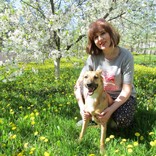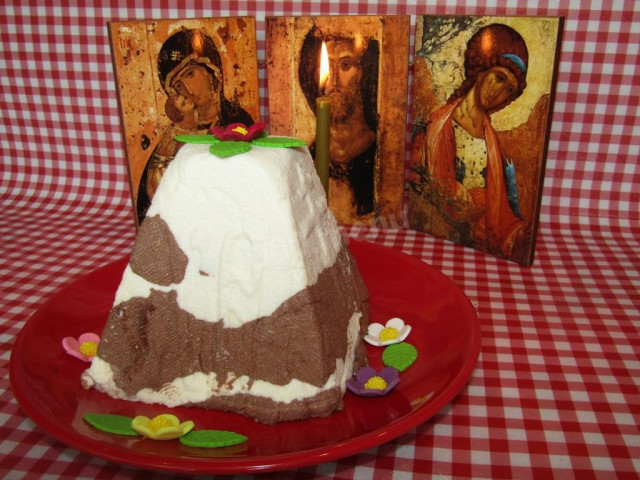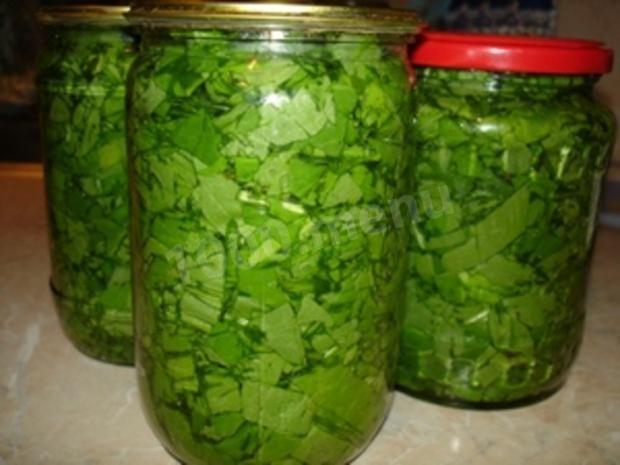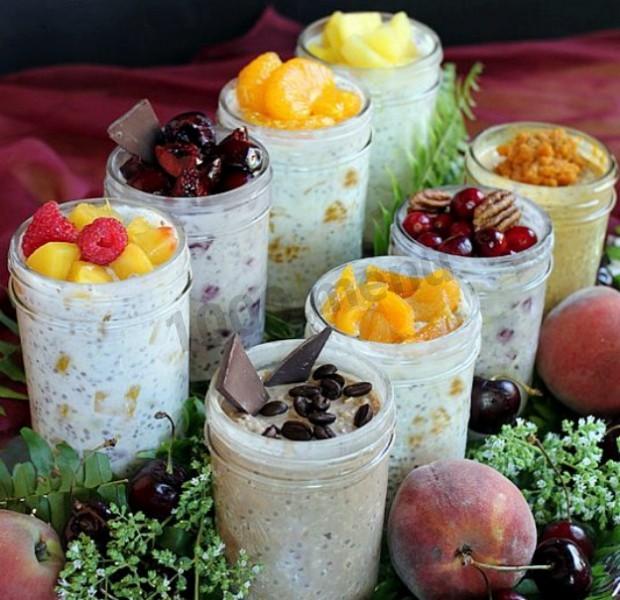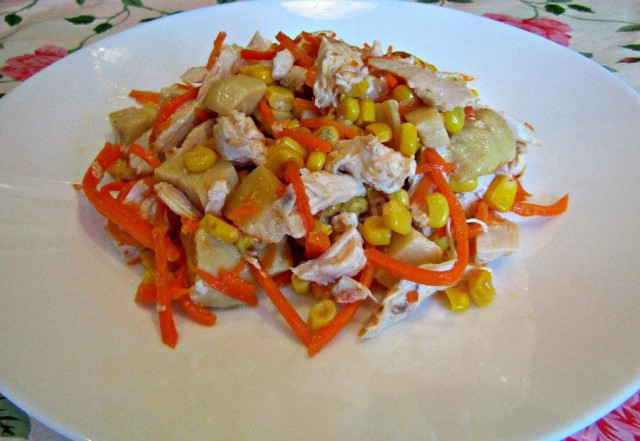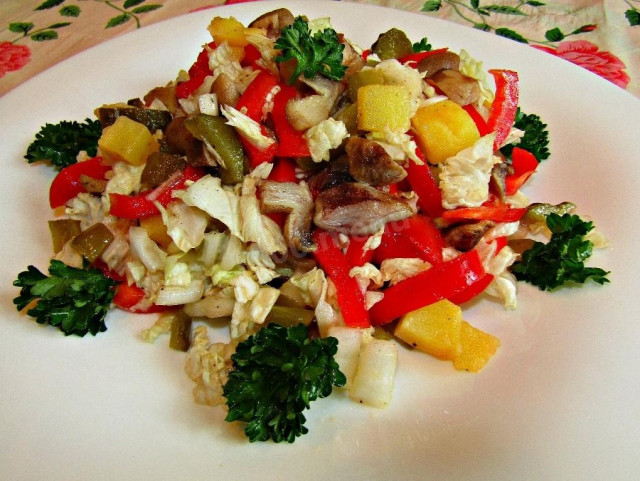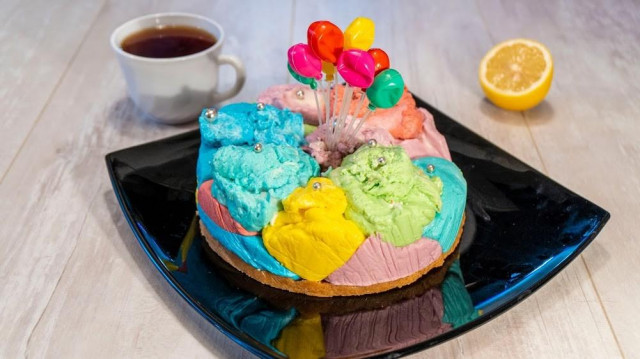Composition / ingredients
Step-by-step cooking
Step 1:
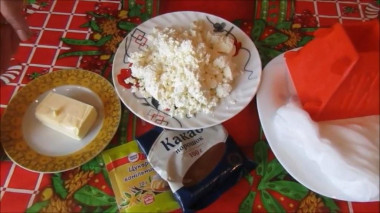
Prepare all the ingredients. Cottage cheese should take a fat 9 - 15% fat content.
Step 2:
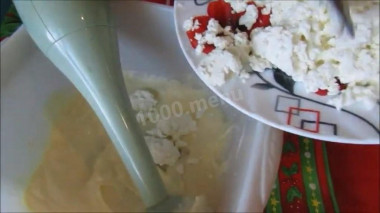
A few hours before cooking, we take the butter out of the refrigerator and let it heat up to room temperature. Beat the butter with condensed milk until smooth. Gradually introduce the cottage cheese and mix everything thoroughly with a blender.
Step 3:
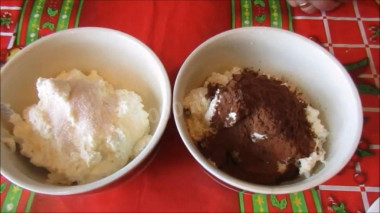
Divide the resulting curd mass into 2 parts. Add vanilla sugar to one part, and cocoa powder to the other. Add the amount of cocoa to your taste, I like the part with cocoa to be with a noticeable bitterness, so I add 2 tbsp.l, you can add less cocoa. Mix both parts thoroughly.
Step 4:
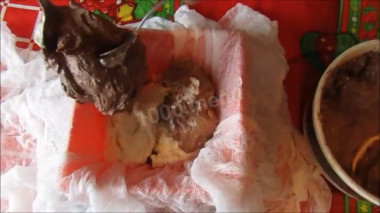
Take the pasochnitsa (I have a height of 12 cm) spread it with slightly moistened gauze, folded in 2 layers and spread the white and brown curd mass in random order. At your request, you can lay out even layers. From above, we cover Easter with gauze, put a little oppression and send it to the refrigerator. Depending on the humidity of the cottage cheese, Easter is ready in 10-20 hours, most often completely ready in a day.
Step 5:
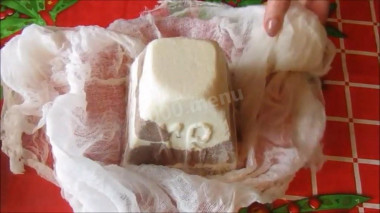
It is desirable to put the mold in a deep dish and drain it as the serum is separated. A day later, we take Easter out of the refrigerator, carefully remove the pasochnitsa, gauze and decorate as desired.
Step 6:
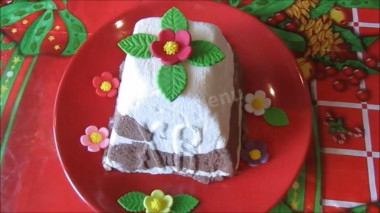
Quick and easy cottage cheese Easter is ready! For a more detailed recipe, see the video. Enjoy your meal!
Cottage cheese mass or Easter is another element of the festive table. There are versions that cottage cheese masses, like cottage cheese itself, are one of the oldest sacred dishes associated with fertility and the worship of fertility deities. Multiple rituals of antiquity (the spring rite of greeting the earth, the first plowing of the field) were carried out with the use of cottage cheese and other dairy products, which had a symbolic meaning. Cottage cheese is more than food; it is the best thing in milk, its essence, the most nutritious and useful for a person. And mashed cottage cheese, and even with sugar and with the best butter, is the highest gift of nature. For the common man in the past, such luxurious food was available only once a year, so it was made for a very long time and from the best products. With the adoption of Christianity, traditions gradually changed, and the meaning of the symbol was lost in the pagan past. The main thing remained – on Easter, the most important holiday in Christianity, treats were made with special care and love. Cottage cheese Easter was consecrated in churches and had the essence of "blessed" food.
Caloric content of the products possible in the composition of the dish
- Cottage cheese of 40% fat content - 466 kcal/100g
- Cottage cheese of 20% fat content - 233 kcal/100g
- Cottage cheese of 18% fat content - 226 kcal/100g
- Cottage cheese of 10% fat content - 156 kcal/100g
- Low-fat cottage cheese - 75 kcal/100g
- Cottage cheese with sour cream - 260 kcal/100g
- Fruit cottage cheese - 147 kcal/100g
- Soft dietary cottage cheese - 170 kcal/100g
- Cottage cheese "vitalinia" - 64 kcal/100g
- Cottage cheese "morning" ( "danone") without sugar - 91 kcal/100g
- Cottage cheese - 156 kcal/100g
- Condensed milk with sugar - 324 kcal/100g
- Butter 82% - 734 kcal/100g
- Amateur unsalted butter - 709 kcal/100g
- Unsalted peasant butter - 661 kcal/100g
- Peasant salted butter - 652 kcal/100g
- Melted butter - 869 kcal/100g
- Cocoa powder - 374 kcal/100g
- Vanilla sugar - 379 kcal/100g
